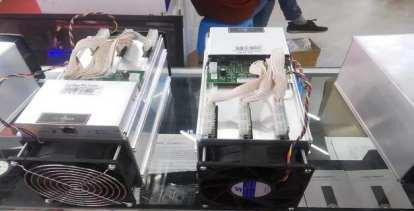In the ever-evolving landscape of cryptocurrency mining, the pursuit of efficiency remains paramount. Bitcoin, the pioneering digital currency, demands immense computational power to solve complex algorithms, commonly handled by specialized mining rigs. However, as environmental concerns and energy costs surge, the integration of renewable energy sources like solar power into the mining ecosystem is no longer a futuristic concept but a pressing necessity. This comprehensive guide will delve into solar Bitcoin miner recommendations, exploring how solar-powered mining farms and cutting-edge hosts are revolutionizing the way we mine, reduce carbon footprints, and maximize profitability.
Traditional Bitcoin mining setups often involve colossal electricity consumption, translating to elevated operational costs and significant environmental impact. Enter solar mining rigs: machines powered largely or entirely by solar energy panels that convert the sun’s rays into actionable electricity. Not only do these rigs promise a more sustainable approach, but companies specializing in hosting these solar-powered miners have cropped up, offering a synergy of green innovation and financial gains. For enthusiasts and institutional miners alike, embracing solar miners means envisioning a future where mining coexists harmoniously with the environment.

When scrutinizing the practicality of solar Bitcoin mining, one cannot overlook the intricate dance between hardware efficiency and solar energy optimization. Mining rigs like the Antminer series or Whatsminer have set the gold standard by balancing hash rates with energy consumption. However, pairing these miners with modern photovoltaic installations requires meticulous calibration. For instance, deploying multiple high-capacity solar arrays in geographically favorable locations — where sunlight is both abundant and consistent — can sustain continuous mining operations even during less sunny periods. Additionally, integrating battery storage systems ensures energy surplus is captured for use at night or during overcast conditions, safeguarding uptime and maintaining mining profitability.
Beyond Bitcoin, other cryptocurrencies such as Ethereum (ETH) and Dogecoin (DOG) offer lucrative mining opportunities, albeit with differing algorithmic requirements and energy dynamics. Ethereum, with its recent shift to a proof-of-stake system, has reshaped its mining landscape, yet miners still maintain ROI through hosting services optimizing electric efficiency. Dogecoin, often mined alongside Litecoin due to merged mining, benefits from lower energy consumption per hash, making solar powering especially cost-effective. Mining farms embracing diversified cryptocurrency portfolios are increasingly integrating solar infrastructure, catering to miners seeking both decentralized currency balance and energy-conscious operations.

Hosting hosted mining provides another dimension to the solar mining ecosystem. Mining hosting companies lease out mining rigs, often stationed in facilities equipped with advanced cooling and energy systems. Incorporating solar power into these facilities mitigates energy costs and slides hosting service providers into the green economy. Clients, ranging from individual miners to hedge funds, reap benefits sans the technical headaches of setup and maintenance. These hosted solutions often include real-time monitoring dashboards, allowing miners to track hash rates, energy consumption, and environmental impact, further enhancing transparency and operational control.
Exchanges and marketplaces complement this green mining evolution. As solar-powered mined coins gain popularity, exchanges are beginning to spotlight ‘green coins,’ attracting ESG-conscious investors keen on supporting sustainable crypto assets. This push influences mining hardware manufacturers and hosting providers to innovate further, emphasizing efficiency and eco-friendliness. Consequently, the cycle of supply, demand, and innovation tightens, propelling the entire blockchain ecosystem towards a cleaner, more resilient future.
To crystallize the holistic recommendation for enthusiasts and enterprise miners alike: selecting the right solar Bitcoin miner is a matter of weighing hash rate efficiency, solar installation capacity, geographical location, and hosting solutions. Whether you’re an aficionado planning a backyard mining rig or managing sprawling solar-powered mining farms, synergy between hardware and renewable energy infrastructure spells the difference between mere participation and industry leadership. Ready to illuminate your mining journey with the power of the sun? Your optimal solar Bitcoin mining setup awaits, where technology meets sustainability on a sun-drenched horizon.




Leave a Reply